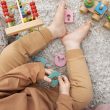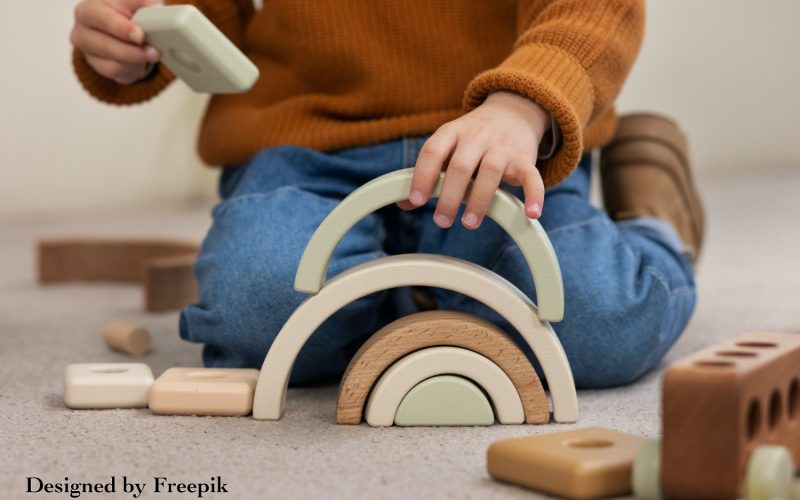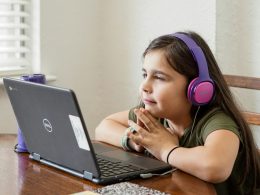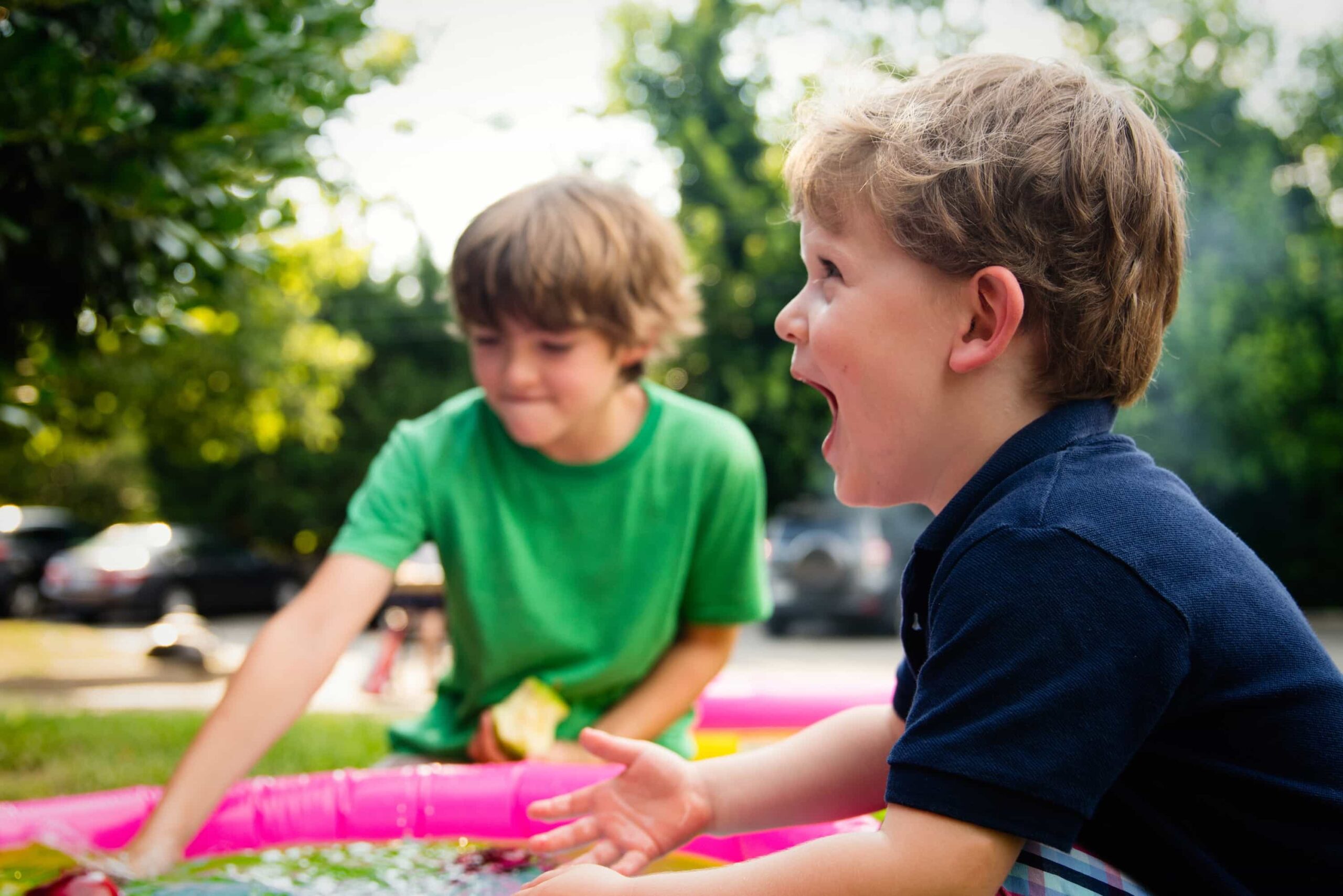Rewind to some years ago, before having a child, I had no idea what Montessori was about. For some reason, in my head, Montessori was synonymous with those fancy and aesthetic-looking rainbow-stacking toys, not more. But some years later, I learned how wrong I could be and how profound Montessori is.
I started finding Montessori made sense to me when I met a Montessori school principal and she walked me through the classroom. I came for a visit with a bunch of parents wanting to see if the school would be a perfect fit for our kids. Like everyone else, I was struck by how neat the classroom was and all the toys and learning materials displayed. It almost felt like a little library or toy store.
‘Oh this is so neat, I’m sure it takes a lot of time to keep them like this’, I remarked. The school principal turned around and faced me, ‘Ah not really, kids keep them like this.’
I remember that I was thinking how impossible that was because I knew my son and I knew how hard it was for him to put his toys back into the box. And I knew that a lot of other kids had similar issues. But an hour later, I watched that after the kids were done with their free time, they put the toys back on the shelves. Amazing!
Prepared Environment

www.freepik.com
What I saw that day left an impression on me. At first, I thought it had nothing to do with Montessori methodology, but as it turned out, it was everything about Montessori. This is why Montessori emphasizes what they say as ‘prepared environments’. A prepared environment is an organized, clean, spacious, warm, and inviting space in which learning and activities take place. In such space, children need less help from parents or adults because everything is set according to their needs, with not too many items or colors to avoid overstimulation. They don’t use regular-size chairs, so they don’t need to climb up. Instead, they use a weaning chair of their size. Kids can grab their toys or whatever materials from an infant shelf that is about their height and easy for them to reach. They also have access to cleaning supplies like napkins if they spill something and they need to wipe it.
This environment wishes to say to children that they are free and trusted. They are allowed to touch and play, and they are trusted to clean up after themselves. Things are organized in such a way that it is easy for them to do just that.
The purpose of such space is not only to get kids to put their toys back (which is just one of the perks!) but setting your environment to accommodate a child’s needs can also help them to learn and master skills on their own. This is perhaps the most appealing aspect of Montessori: believing in your child and teaching them to help themselves.
Montessori At Home
The big question now is can we bring that environment home? Is it possible to integrate it at home or can it only exclusively be done by sending them to a Montessori school? The answer is YES, you can also do Montessori at home. It makes even more sense to start it at home, as early as possible.
Now, how to make your home Montessori? Here are some ideas:
It all starts with changing your mindset
It is easy to think that once you alter your space to make it resemble a Montessori classroom, you’re done. Your child will figure things out by themselves. Unfortunately, this is not the case. To start Montessori at home, you can start shifting your mindset first by following these Montessori principles:
- Follow the child – It’s always important to start by observing your child. See what their interests are and what they like doing, and ask yourself how you can better support them with their interest. For example, if your child is curious about bugs, you can help your child by providing books about bugs, watching documentaries about bugs, or organizing craft projects around bugs. Montessori talks about sensitive periods, which are periods when kids are more receptive to learning something. There are some sensitive periods going on in your child’s life from the newborn to the age of 6 when they are more keen on mastering certain skills like language, writing, reading, social skills, etc. The idea is that during this period, it is easier for your child to learn something based on their interests, rather than you forcing them to learn something they’re not interested in. In the same way, you can do this by following their particular interests at that moment.
- Hands-on learning – Montessori believes that your child learns best through hands-on learning. Allow them to learn through concrete experiences before they learn more abstract concepts. For instance, when learning about numbers and counting, you can use counting sticks or even better, Montessori math materials like beads to make sense of the numbers and quantities. Understanding the concrete first helps them build mental concepts later.
- Involve your child in daily activities – What I didn’t know before was that my son learned from helping me do the dishes or preparing his snacks to bring to school. At first, it felt like a nuisance and we spent more time completing an activity, but fast forward to 3 months later, I realized that he had helped me a lot by wiping the table and the area around the sink. But most of all, he feels super happy and proud that he chips in on the housework. It makes him feel like a big kid. The additional bonus to this is: that he gets more sensory input (playing with water) and he refines his fine motor skills by squeezing and wiping, which eventually will help him to learn to write at some point.
Preparing your environment
Once you change your mindset, you can also start setting up your environment. The aim for this is twofold; to help your child be independent and to enable them to learn through their own discovery and experiences.

www.freepik.com
- Use child-sized furniture
One of the first things we need to do is to accommodate your child’s needs by getting Montessori furniture. Montessori furniture is child-sized furniture that is designed to empower children and ensure that they will benefit emotionally, cognitively, and socially as they use it. For instance, having chairs and tables that fit their size, enables them to move around, getting in and out of it freely. This will allow your kids to be able to do things on their own, with little or no help at all from adults.
- Ensure freedom of movement
I remember that as a child, one of my difficult moments was unable to move as much as I wanted. I wasn’t allowed to grab the glass on the upper cabinet, or I wasn’t allowed to help my mom around the kitchen for fear of hurting myself. When I started learning about Montessori, I learned that the philosophy is quite the contrary. Montessori believes that children will benefit from freedom of movement. For instance, it offers more benefits for infants and toddlers to sleep in a floor bed. They are free to move on their own, and in return, they learn from their environment and pick up as many sensory cues. For infants and toddlers, the more they move, they are able to strengthen their muscles and motoric skills.
- Offer educational toys

www.freepik.com
Montessori believes that ‘play is the work of the child’. Children actually learn through play. Hence, it makes sense to offer kids toys that will benefit them. What sort of toys are these? What is educational for Montessori?
Officially, there is no such thing as ‘Montessori toys’, but there are toys that are aligned with Montessori values. So, what values should Montessori-aligned toys have? In general, they should embrace the following characteristics:
- Made of natural materials
- Non-electronic
- Focuses on one skill at a time
- Embrace repetition
For Montessori, the simpler the toy, the better. The reason for this is that Montessori wants to minimize distractions and avoid overstimulation so that the children can concentrate on one skill. So, you can also think twice before getting another battery-operated toy and see what benefits it can offer your child, when possible provide one single focus for your child. It will help them master new skills better.
Final Note
These days, children are measured by their academic performance. Although this is not entirely bad, we often forget that there are other aspects that they should also learn, especially as they, too, are a member of society. As I started to research schools for my son, I learned that the idea of having an independent, curious, and happy child became more appealing to me. This is what I see in Montessori. I like the idea that it encompasses more than just the academic side, but it also teaches your child to be an independent, well-mannered kid.











